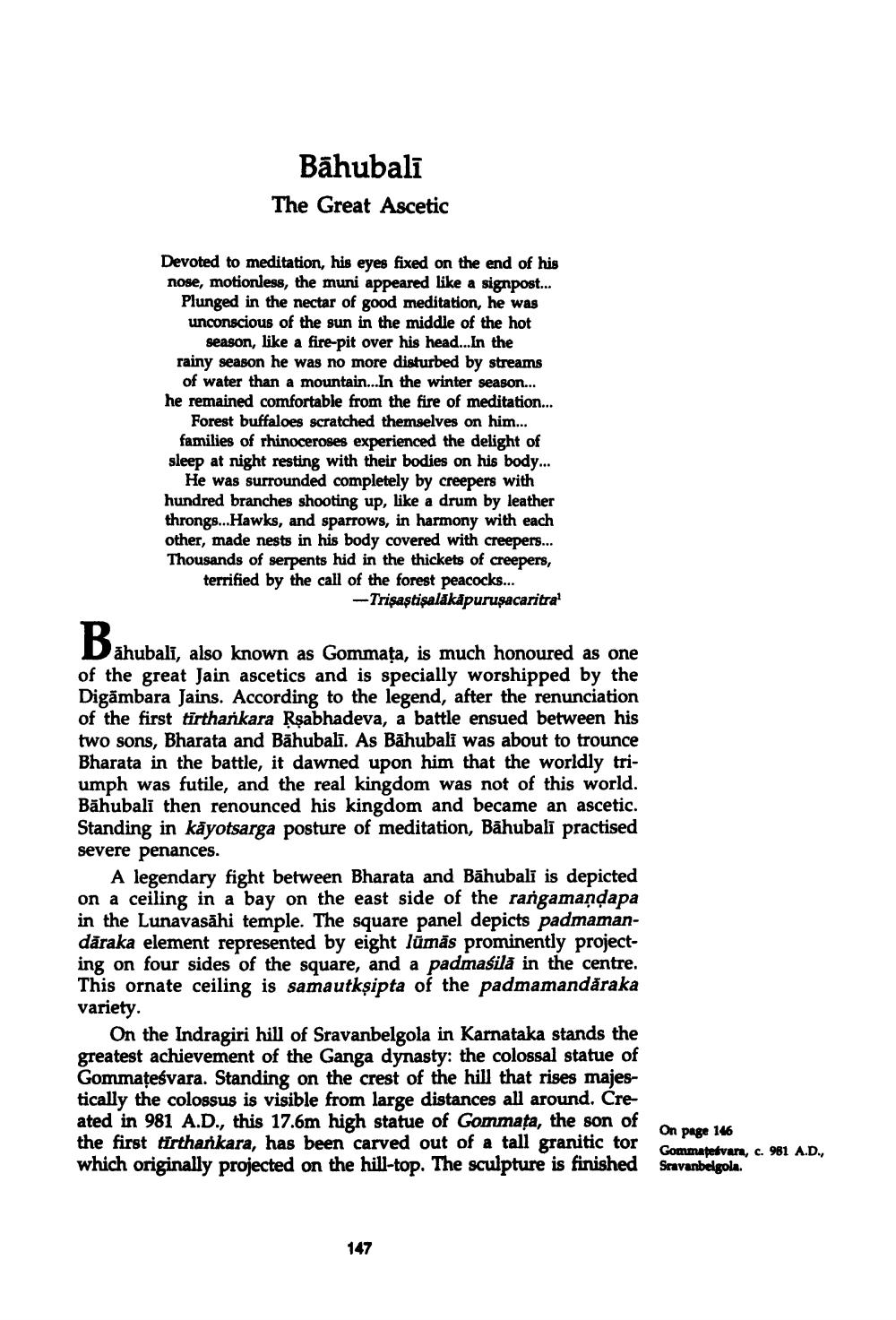________________
Bāhubalī The Great Ascetic
Devoted to meditation, his eyes fixed on the end of his nose, motionless, the muni appeared like a signpost... Plunged in the nectar of good meditation, he was unconscious of the sun in the middle of the hot
season, like a fire-pit over his head... In the rainy season he was no more disturbed by streams
of water than a mountain... In the winter season... he remained comfortable from the fire of meditation...
Forest buffaloes scratched themselves on him... families of rhinoceroses experienced the delight of sleep at night resting with their bodies on his body...
He was surrounded completely by creepers with hundred branches shooting up, like a drum by leather throngs...Hawks, and sparrows, in harmony with each other, made nests in his body covered with creepers... Thousands of serpents hid in the thickets of creepers, terrified by the call of the forest peacocks...
-Trisastisalakapuruşacaritral
Bahubali, also
ascetics and ihe legend,
āhubali, also known as Gommata, is much honoured as one of the great Jain ascetics and is specially worshipped by the Digambara Jains. According to the legend, after the renunciation of the first tirtharkara Rşabhadeva, a battle ensued between his two sons, Bharata and Bahubalī. As Bahubali was about to trounce Bharata in the battle, it dawned upon him that the worldly triumph was futile, and the real kingdom was not of this world. Bahubali then renounced his kingdom and became an ascetic. Standing in kayotsarga posture of meditation, Bāhubalī practised severe penances.
A legendary fight between Bharata and Bāhubali is depicted on a ceiling in a bay on the east side of the rangamandapa in the Lunavasāhi temple. The square panel depicts padmamandāraka element represented by eight lūmās prominently projecting on four sides of the square, and a padmašilă in the centre. This ornate ceiling is samautkşipta of the padmamandāraka variety.
On the Indragiri hill of Sravanbelgola in Karnataka stands the greatest achievement of the Ganga dynasty: the colossal statue of Gommateśvara. Standing on the crest of the hill that rises majestically the colossus is visible from large distances all around. Created in 981 A.D., this 17.6m high statue of Gommata, the son of the first tirthankara, has been carved out of a tall granitic tor which originally projected on the hill-top. The sculpture is finished
On page 146 Gommafetvara, c. 981 A.D., Sravanbelgola.
147




